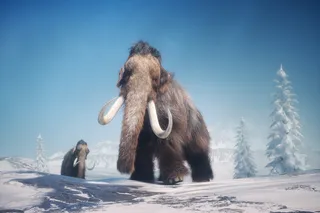In September, Chinese researchers announced that they had found an ancient human skull earlier in the year. It was discovered about a dozen miles outside of Yunyang (formerly known as Yunxian) in central China — the same area where two other skulls were found in decades past.
Like its predecessors, the most recent find, dubbed “Yunxian Man 3” by some, likely dates to around 1 million years ago. And it seems to be in the best condition yet.
“The Yunxian fossils are the oldest in mainland Asia,” says Amélie Vialet, a paleoanthropologist with the National Museum of Natural History in Paris who has worked on some of the previous remains. The discovery of a well-preserved third skull could reveal much about the development of our ancient ancestors.
Hominin History
The first of the Yunxian skulls was discovered in 1989, when Chinese researchers began a dig after reports of ancient animal bones in the area, according to Hubei Daily. Then a second skull was found the next year, also in fairly good condition.
Read More: 5 Skulls That Shook Up the Story of Human Evolution
The site is unique, Vialet says, due to the extent of work that Chinese researchers and international scientists have done on various aspects of the remains in the decades since. Researchers conducted analyses on the area’s geology as well as the human fossils and animal remains, giving us a fuller picture about what happened there.
Aside from these three skulls, Vialet continues, roughly 500 stone tools and about 2,000 animal remains have been found. Based on the way these remains and tools are jumbled together, she says it’s possible that researchers are excavating the remains of an ancient catastrophic flood that killed hominins and animals alike.
Cut marks on some of the animal bones, for example, could be an indication that other hominins who survived the flood later scavenged the remains of the animals killed by the flood.
The human skulls, on the other hand, filled with sediment fairly quickly after death. This damaged them in some ways — but may have also helped preserve the remains, Vialet says. In fact, the skulls and the sediment within mineralized over time, fusing together so they appear like large stones.
More than a decade ago, Vialet and her colleagues used 3D imaging techniques to reconstruct what the skulls might have looked like before being crushed and misshapen over the course of the past million years. She hopes that the newly discovered skull will confirm her reconstructions.
“This discovery will be a way to control and check if our hypothesis was good or not,” she says.
Who Were These People?
Even though we now have three fairly complete skulls unearthed in the area, there’s still a lot we don’t know.
For starters, scientists are not completely clear whether these remains are Homo erectus or something else. We have some Homo erectus remains in Africa that date roughly to this same time, but they don’t appear that similar — for one, the brain capacity of the African remains is larger, Vialet says.
Read More: Homo Erectus: What Do We Know About Our Early Ancestors?
It could be that the newer remains are a local Asian variation of Homo erectus. While the African fossil record of Homo erectus is comparatively larger, there aren’t many fossil records that date within several hundred thousand years of the Yunxian discoveries in mainland Asia.
In other words, we know more about how Homo erectus may have looked in Southeast Asia — especially in Java, where the species was first discovered in the late-19th century. But Vialet says that the Yunxian fossils look a little different from even the Java remains.
“They are Homo erectus-like, but lacking some of the very typical traits,” she says.
These skulls also appear to have flatter faces than Neanderthals. And they’re very different from some of the next-nearest hominins in China, found near Beijing and dated to around 500,000 years ago. Half a million years is a long time, though, so it’s possible that the latest remains represent an ancestral group to these Beijing remains, Vialet says.
Ultimately, these uncertainties boil down to the fact that while the new skull is great, there’s still a lot we don’t know about where these fossils fit into hominin evolution. Vialet predicts that future studies on this new skull will come out in the coming months and years — but in the meantime, perhaps even more bones are waiting to be unearthed.















